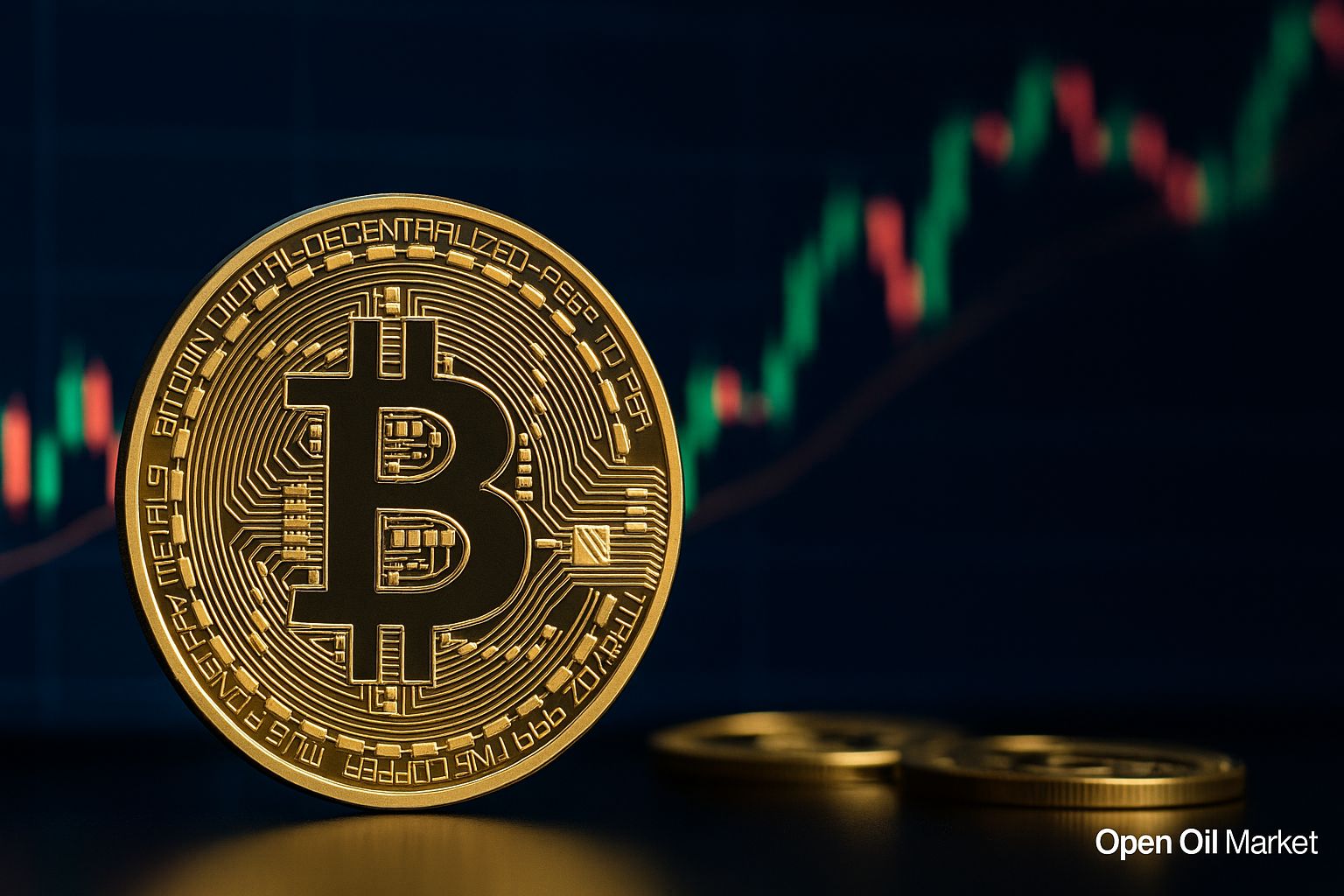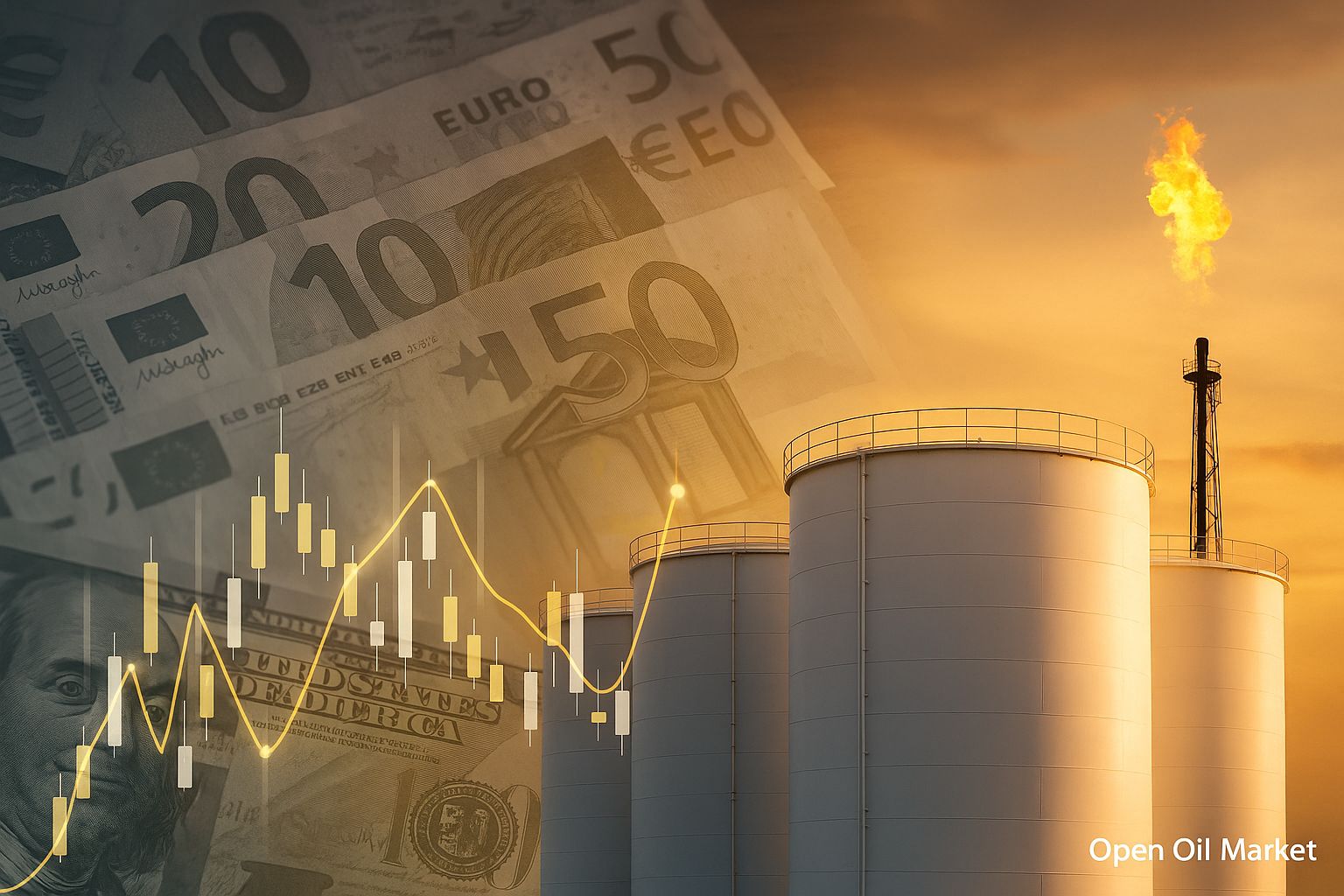
Current Cryptocurrency News as of October 31, 2025: Bitcoin Consolidates Around $110,000 After October Volatility, Ethereum Approaches $4,000 Again, Altcoins Show Resilience, Institutional Inflows Remain High, Overview of Top 10 Cryptocurrencies.
As of Friday morning, October 31, 2025, the cryptocurrency market is relatively stable following a tumultuous month. Bitcoin is holding near the $110,000 mark as investors digest recent macroeconomic signals from the U.S. Federal Reserve. Despite the fluctuations, the leading cryptocurrency reaffirms its status as "digital gold" amid external uncertainties. At the same time, major altcoins are returning to growth, fostering hopes for the long-awaited alt season. Institutional investors continue to actively invest in digital assets, supported by improved industry regulation worldwide. Below, we will explore the key events and trends in the cryptocurrency market that are relevant to investors today.
Cryptocurrency Market Overview
October has been extraordinarily volatile and contrasting for the crypto market. At the beginning of the month, Bitcoin set a new all-time high, exceeding $125,000, but by October 10, a sharp sell-off triggered by escalating trade conflicts between the U.S. and China saw BTC's price plummet to around $102,000. During this period, the total market capitalization temporarily fell below $4 trillion. By mid-month, the situation stabilized: major players bought the dip, and prices began to recover amid easing external risks and new institutional inflows. In the last week of the month, the market's attention was fixed on the U.S. Federal Reserve meeting—the Fed's rhetoric was tougher than expected, which somewhat dampened investor sentiment. Nonetheless, the cryptocurrency industry demonstrated resilience, quickly recovering from the shocks; by the end of October, key digital assets had regained a significant portion of their positions.
Bitcoin Consolidates After Correction
The flagship cryptocurrency, Bitcoin (BTC), experienced significant fluctuations but managed to remain above the psychologically important threshold of $100,000. In the first half of the month, BTC surged to around $126,000 amid optimism and institutional purchases, but then followed with a correction due to the strengthening U.S. dollar and signals of tighter monetary policy from the Federal Reserve. The month’s low hovered around $102,000, after which Bitcoin reclaimed much of the loss. Currently, BTC is trading in the $108,000–112,000 range, undergoing a consolidation phase. Experts believe this pause after a sharp rally is beneficial for "cooling" the market before a potential new wave of growth. Many investors still consider Bitcoin a means of risk hedging: amid global economic uncertainty and fluctuations in gold prices, interest in BTC remains high. Bitcoin's market capitalization exceeds $2.2 trillion, accounting for approximately 58% of the total cryptocurrency market.
Ethereum Retraces to $4,000
Following Bitcoin, the second-largest cryptocurrency by market capitalization, Ethereum (ETH), is also recovering. A recent correction brought Ethereum's price down to about $3,700 during the sell-off peak, but by the end of October, ETH had confidently returned to growth. Currently, Ethereum is trading above $3,800, nearing the $4,000 mark again. The volatility has had a less dramatic impact on it compared to Bitcoin: the leading altcoin recovered relatively quickly from its drop. Additional support for the ETH market has come from progress in institutional products; this autumn, the first Ethereum-based exchange-traded fund (ETF) was approved in the U.S., facilitating access for large investors to this asset. Simultaneously, the Ethereum ecosystem continues to evolve—implementations of Layer-2 solutions and other upgrades enhance network efficiency, attracting DeFi and NFT project developers. Ethereum continues to hold about 20% of the total cryptocurrency market capitalization, remaining a foundational platform for decentralized applications.
Altcoins: Growing Optimism in the Market
In addition to Ethereum, other leading altcoins are also showing signs of recovery, boosting optimism among market participants. The decrease of Bitcoin's dominance below 60% in October stimulated capital inflows into altcoins, prompting investors to reallocate funds towards promising projects within the top 10. In recent days, several popular coins have significantly appreciated in value. Below are some notable examples of market dynamics among altcoins:
- Solana (SOL) – a high-performance blockchain platform that recovered after a recent downturn. SOL is trading around $180, bouncing back from an October low of about $150. Interest in Solana is fueled by the growth of its DeFi and NFT ecosystem, as well as expectations for the launch of exchange-traded funds for this asset—applications for the first Solana ETF are already under regulatory review.
- XRP (Ripple) – the token of the Ripple payment network, which rebounded after a fall of more than 20% during the October turbulence. XRP is now trading around $2.5, supported by rising institutional interest. Recently, the first ETF based on XRP futures was launched in the U.S., and Brazil’s regulator approved a spot XRP ETF—these events are increasing investor confidence in the token. Following Ripple's legal victory over the SEC in 2024, XRP is gradually regaining its place among industry leaders.
Overall, a broad range of altcoins is moving upward, particularly in the platform token sector and projects with active communities. The successful recovery of prices among the largest coins creates the groundwork for a potential new "alt season," though volatility in this segment remains high.
Institutional Investors and Regulation
One of the key market drivers in 2025 has been the unprecedented influx of institutional capital into cryptocurrencies. The introduction of the first spot ETFs for Bitcoin and Ethereum has significantly simplified access to digital assets for funds and large investors, leading to record investment volumes. By the beginning of the fourth quarter, total investments in crypto funds exceeded historical highs. Additionally, the range of exchange-traded products based on altcoins is expanding—following market leaders, ETFs for other coins (including XRP, Solana, and Cardano) are launching or planned. Simultaneously, regulators in many regions are softening their stance on the crypto industry, enhancing its appeal. For instance, Japan's top financial regulator is considering legislative changes that would allow local banks to directly hold Bitcoin and other crypto assets for clients. In the European Union, a comprehensive regulatory package, MiCA, has come into effect, providing unified rules for cryptocurrency companies. As a result of these initiatives worldwide, trust in the market is increasing, and institutional players are confidently strengthening their positions in cryptocurrencies.
Top 10 Most Popular Cryptocurrencies
Below is the current ranking of the ten largest cryptocurrencies by market capitalization (as of the end of October 2025) along with a brief description of their current status:
- Bitcoin (BTC) – the first and largest cryptocurrency. BTC is trading around $110,000 after undergoing a significant correction; its market capitalization exceeds $2.2 trillion (~58% of the market). Bitcoin remains the main "digital gold," embodying investor trust as a safe-haven asset and the flagship of the entire crypto market.
- Ethereum (ETH) – the leading altcoin and smart contract platform. The price of ETH is near the $4,000 mark, with a capitalization around $800 billion (~20% of the market). Ethereum has strengthened its position thanks to advancements in scaling technologies and the launch of the first ETF on Ethereum, which has supported rising institutional interest. Ethereum plays a key role in DeFi and NFT ecosystems, remaining the second most significant digital asset.
- Tether (USDT) – the largest stablecoin pegged to the U.S. dollar (1 USDT ≈ $1). The coin provides liquidity in the cryptocurrency market, serving as a convenient means for trading and hedging. The market capitalization of USDT is around $150 billion, reflecting its status as the main stablecoin in the industry.
- Binance Coin (BNB) – the internal token of the largest cryptocurrency exchange, Binance, and the native asset of the BNB Chain blockchain. The price of BNB exceeds $1,000, close to its all-time highs; capitalization is estimated at about $150 billion. The token is widely used for fee payments, participation in DeFi applications, and other services within the Binance ecosystem. Despite previous regulatory pressure on Binance, BNB confidently remains among market leaders thanks to its extensive ecosystem.
- XRP (Ripple) – a cryptocurrency used for fast cross-border payments within the Ripple network. XRP is priced around $2.5; its capitalization exceeds $130 billion. Following clarity on its legal status in the U.S. and the launch of exchange-traded products, interest in XRP has significantly increased. The token has solidified its position among the largest coins, reaffirming its role as a primary tool for international transactions on the blockchain.
- Solana (SOL) – a high-speed blockchain platform for decentralized applications. SOL is trading around $180 (capitalization ~ $75 billion), recovering from a fall in the autumn. Solana attracts investors with its network speed and the increasing number of projects in its ecosystem. Expectations for the launch of ETFs on Solana and successes in the DeFi space enhance its position in the top 10.
- USD Coin (USDC) – the second-largest stablecoin backed by dollar reserves (issuer – Circle). USDC consistently maintains a 1:1 peg to the dollar; current capitalization is around $60 billion. Due to the transparency of reserves and adherence to regulatory requirements, USDC is widely used by institutional participants and DeFi protocols.
- Dogecoin (DOGE) – the most well-known meme cryptocurrency. DOGE is trading around $0.18 (capitalization ~ $27 billion) and remains in the top ten coins despite high volatility. Dogecoin’s popularity is driven by its active community and celebrity endorsements; during periods of overall market upturn, this coin traditionally attracts increased attention from speculators.
- TRON (TRX) – a platform for smart contracts and applications popular in the Asian region. TRX is priced around $0.30 (capitalization ~ $26 billion) and continues to hold a leading position in the market. The Tron network is known for its high throughput and is widely used for the issuance of stablecoins (a significant portion of USDT is issued on the Tron blockchain). The project is also taking steps towards compatibility with Ethereum and plans to launch its own ETF products.
- Cardano (ADA) – a blockchain platform evolving based on scientific research principles. ADA is trading around $0.60 (capitalization ~ $21 billion) after a notable correction, but continues to be in the top ten. The Cardano network is actively developing DeFi applications, plans for the integration of new stablecoins, and the expected launch of ETFs on this asset in the future. The project's community remains confident in Cardano's long-term potential, supporting its token among the largest cryptocurrencies.
Looking Ahead: Predictions and Expectations
As the cryptocurrency market enters the final months of 2025, it does so with cautious optimism. Having weathered the shock drops of October, the industry has demonstrated its resilience and capacity for rapid recovery, even under external pressures. Going forward, macroeconomic and geopolitical conditions will remain key orientations for market participants. Investors will closely monitor the Federal Reserve's next moves—although the current tightening rhetoric has somewhat cooled enthusiasm, markets still anticipate a loosening of monetary policy in the coming months. Additionally, developments in U.S.-China relations will remain in focus: progress in trade negotiations could alleviate some risks, while new tariff threats may short-term impact risk appetite.
If external conditions remain favorable, Bitcoin could resume its march toward new peaks—several banking analysts continue to predict a rise to $180,000–200,000 should the bullish cycle persist. Altcoins, on the other hand, may realize their accumulated growth potential, especially if the inflow of institutional funds into the sector continues. However, experts caution that volatility in the cryptocurrency market remains high, making it important for investors to be cautious, diversify their portfolios, and account for correction risks. Overall, 2025 has already become a significant year for cryptocurrencies: the industry has received unprecedented recognition—from new price records for Bitcoin to widespread institutional participation—and many market participants enthusiastically look forward to the future development of the crypto industry.




